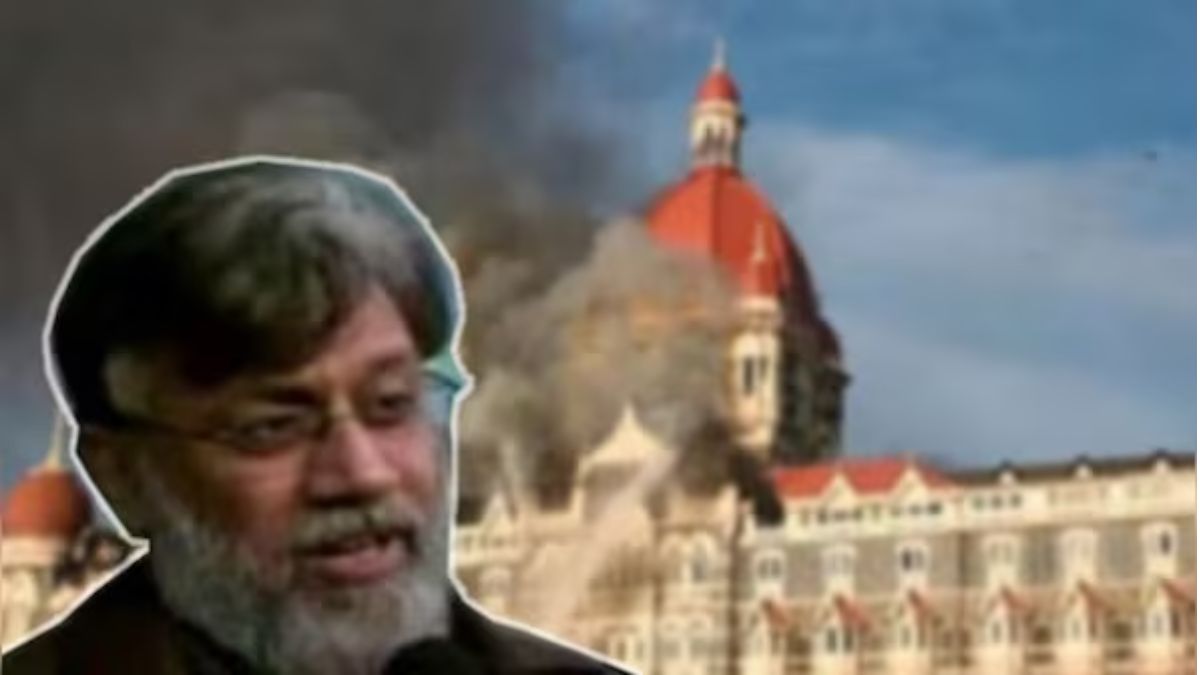After years of diplomatic back-and-forth and legal hurdles, Tahawwur Hussain Rana — one of the key accused in the 26/11 Mumbai terror attacks — was finally extradited to India. The Pakistan-born Canadian businessman landed in New Delhi last week from the United States and is currently facing intense interrogation by the National Investigation Agency (NIA), according to PTI.
Rana , who ran an immigration business, allegedly allowed co-conspirator David Headley to use his firm as a cover while scouting locations across Mumbai ahead of the 2008 attacks. His name has long been associated with the planning stages of the assault, and Indian authorities had been pressing for his extradition for years.
Now that he’s in custody, investigators are hoping to revisit key leads and unanswered questions from the 26/11 tragedy— an attack that left 166 people dead and more than 300 injured.
As the NIA delves further, their investigation focuses not only on Rana’s potential involvement but also on exposing the broader conspiracy, including his alleged connections to Lashkar-e-Taiba (LeT) and other terrorist organisations believed to be linked to the attack.
Here’s a closer look at what has unfolded so far.
Asked for Quran, pen & paper, offers Namaz five times
Following Rana’s extradition, NIA took his custody, and he is currently being held in a high-security cell at the NIA headquarters in Delhi’s CGO Complex and is guarded by security personnel round the clock.
According to PTI sources, he has been cooperating with investigators led by Chief Investigating Officer Jaya Roy. The NIA officials are ensuring Rana’s medical check-up every 48 hours, and he is being allowed to meet his lawyers , in accordance with the order of a Delhi court that had on early Friday morning granted 18-day custody to the probe agency.
Inside the cell, Rana has made a few requests. As per PTI sources, he asked for a pen, some paper or a notepad, and a copy of the Quran — all of which were provided to him. He has also been observed offering Namaz five times a day, an officer told Hindustan Times.
“He requested for a copy of Quran which we provided. He is seen offering Namaz five times in his cell,” said an officer, describing Rana as a “religious man".
He has raised no special food demands and is being provided with “food items which are given to any other accused” according to the standard protocols meant to deal with such subjects.
Meanwhile, NIA officers have been questioning Rana for nearly eight to ten hours each day. The interrogation is reportedly being carried out based on a mix of evidence, including call records, his travel history across India, and other intelligence leads.
Links with Pakistan, Dawood Ibrahim?
The NIA, on Sunday, closely analysed dozens of phone conversations between Tahawwur Rana and his childhood friend and co-conspirator, David Coleman Headley, also known as Daood Gilani. These calls are now being used to piece together the broader conspiracy behind the 26/11 attacks.
As per a Times Now report, the agency has found a lead involving a person based in Dubai, who is believed to have met Rana at Headley’s request. In one of the recorded conversations, Headley is heard advising Rana not to travel to India in the fall of 2008 — a period just before the deadly attacks took place.
Investigators have learned that this Dubai meeting was facilitated by Headley and involved an unidentified individual, currently being referred to as ‘Mr. X’. Agencies suspect this person may have had prior knowledge of the attack plans. They are also investigating whether this person has any links to Dawood Ibrahim or D-Company, the organised crime syndicate operating out of Dubai, sources told IANS.
As the investigation progresses, the NIA has also brought into focus the involvement of senior leaders from terror outfits such as LeT and Harkat-ul-Jihadi Islami (HuJI).
Names that have surfaced include Hafiz Muhammad Saeed alias Tayyaji, Zaki-ur-Rehman Lakhvi, Sajid Majid alias Wasi, Illyas Kashmiri, and Abdur Rehman Hashim Syed, also known as Major Abdurrehman or Pasha. These conspirators worked in active connivance with officials from Pakistan’s spy agency ISI, namely Major Iqbal alias Major Ali and Major Sameer Ali alias Major Samir, according to the NIA probe.
According to sources cited by India TV, Rana is believed to have admitted to instructing Headley to carry out surveillance missions in India, under orders from Sajid Mir and Major Iqbal. Nearly 40 to 50 high-value targets were identified during these missions, including prominent locations in Mumbai such as army cantonments, the Siddhivinayak Temple, Shiv Sena Headquarters, and Chabad House — all of which were photographed and video recorded.
Investigators are also trying to verify Rana’s movements across parts of northern and southern India in the days leading up to the attack. These travel details could potentially shed light on further aspects of the planning and execution of the assault.
Rana is currently facing a range of serious charges under Indian law, including criminal conspiracy, murder, and several terrorism-related offences. These fall under the Unlawful Activities (Prevention) Act (UAPA) as well as the SAARC Convention (Suppression of Terrorism) Act.
With input from agencies


)

)
)
)
)
)
)
)
)



